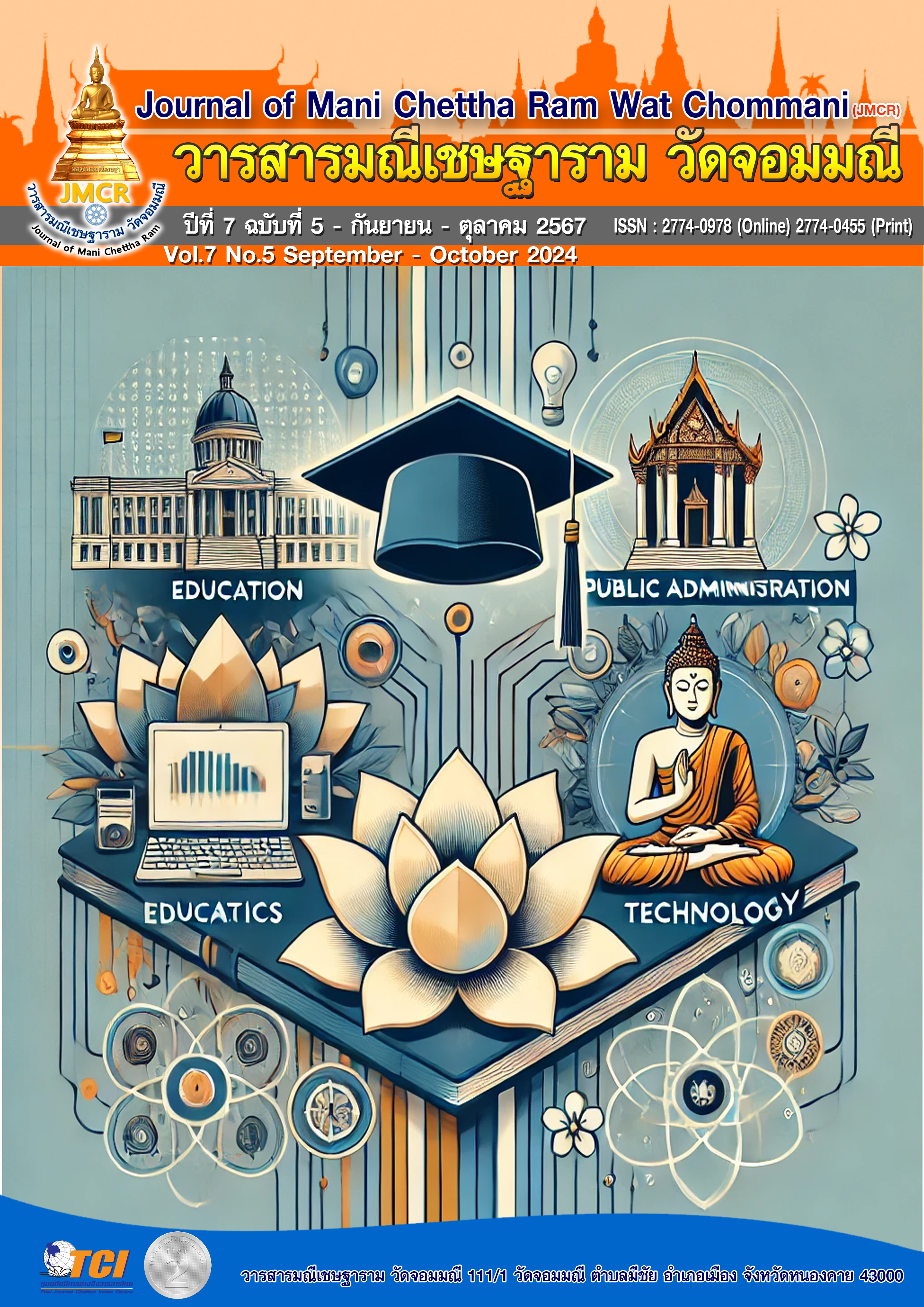STUDY AND COLLECT THE BACKGROUND AND HISTORY OF THE LATE AYUTTHAYA PERIOD OF THE AREA OF THA KHAM SUBDISTRICT IN HAT YAI DISTRICT IN SONGKHLA PROVINCE
Keywords:
History, late Ayutthaya period, Tha Kham SubdistrictAbstract
This research article The objective is to study and collect the background and history of the Ayutthaya period of the area of Tha Kham Subdistrict, Hat Yai District, Songkhla Province using qualitative research methods. By means of document study and group discussions and interviews with important people Consisting of a group of 3 religious leaders, 4 local leaders, 3 local philosophers, and a group of 5 people, totaling 15 monks/people.
The results of the study found that Background and history of the late Ayutthaya period in the area of Tha Kham Subdistrict, Hat Yai District, Songkhla Province, by Ban Tha Kham. There are 3 legends that have been passed down through generations: Legend 1: Formerly known as Ban Tha Nang Kham. It comes from a story that in the past, the mountain was lost. (Currently in the east of Village No. 5, Ban Nong Bua) there is a cave in which the sacred woman lives. Inside the cave there are many items, especially items used for catering such as cups, bowls, spoons, and various pots. Villagers in the area, when there is a banquet or merit-making ceremony at home, will go to the mouth of the cave, bring flowers, incense sticks and candles to worship, sit down with hands folded and pray and ask to borrow utensils from the cave. Blessed Virgin Mary, at the end of the prayer, the desired items will be displayed in front of her. When the work was finished, it was returned to the mouth of the cave. Later, villagers who had borrowed items to use refused to return them.Many times, she became sad, so she closed the mouth of the cave and flew away to another place through Tha Kham. The villagers therefore called it "Tha Nang Kham." Later, it became "Tha Kham" until now. As for the second legend, it is said that Ban Tha Kham was originally There is a large canal. that villagers traveling into the city must walk across the canal Therefore it is affectionately called "Tha Kham" and the third legend tells that the reason it is called Tha Kham is Because a young woman crossed the canal from Ban Tha Kham Klong to Tha Nang Hom and died which from the study of important documents and group discussion along with interviews with important people They all give consistent information about the background and history
References
กระทรวงศึกษาธิการ. กรมการศาสนา. กองพุทธศาสนสถาน (2540). ประวัติวัดทั่วราชอาณาจักร เล่ม 16. กรุงเทพมหานคร: โรงพิมพ์การศาสนา.
______. (2555). ประกาศกระทรวงศึกษาธิการเรื่องแนวทางการพัฒนาและประเมิน สถานพอเพียงเป็นศูนย์การเรียนรู้ตามหลักปรัชญาของเศรษฐกิจพอเพียงด้านการศึกษา. กรุงเทพฯ : ศูนย์ขับเคลื่อนเศรษฐกิจพอเพียง.
คริส เบเคอร์ และ ผาสุก พงษ์ไพจิตร. (2563). ประวัติศาสตร์อยุธยา: ห้าศตวรรษสู่โลกใหม่. กรุงเทพมหานคร: มติชน.
จรูญ หยูทอง. (2564). รากเหง้าและเบ้าหลอม: ท่าข้าม ชุมชนร่วมสมัยตอนปลาย. พิมพ์ครั้งที่ 1. สงขลา: นำศิลป์.
ชัยวุฒิ พิยะกูล. (2554) ศาสนาพราหมณ์ ฮินดูบริเวณลุ่มน้ำทะเลสาบสงขลา. สถาบันทักษิณคดีศึกษา มหาวิทยาลัยทักษิณ: สงขลา.
ธำรงศักดิ์ อายุวัฒนะ. (2547) ไทยในมาเลเซีย. กรุงเทพมหานคร: บรรณกิจ.
นิธิ เอียวศรีวงศ์. (2550). การเมืองไทยสมยัพระเจา้กรุงธนบุรี. (พิมพ์ครั้งที่ 9). กรุงเทพมหานคร: มติชน.
ศรีศักร วัลลิโภดม. (2552) เรือนไทย บ้านไทย. กรุงเทพมหานคร: เมืองโบราณ.
สุทธิวงศ์ พงศ์ไพบูลย์. (2525). รายงานการวิจัย พุทธศาสนาแถบลุ่มทะเลสาบสงขลา ฝั่งตะวันออก สมัยกรุงศรีอยุธยา. สงขลา: สถาบันทักษิณคดีศึกษา มศว.สงขลา.
______. (2542). “ศาลากลางหน” ใน สารานุกรมวัฒนธรรมไทยภาคใต้ เล่ม 15. กรงเทพมหานคร: มูลนิธิสารานุกรมวัฒนธรรมไทย ธนาคารไทยพาณิชย์.
______. (2542) โนรา ในสารานุกรมวัฒนธรรมไทยภาคใต้ เล่ม 8. กรงเทพมหานคร: อมรินทร์การพิมพ์.
ยงยุทธ ชูแว่น. (2550). อำนาจทางการเมืองในความสืบเนื่องบทบาทการค้าของเมืองสงขลา ตั้งแต่กลางพุทธศตวรรษที่ 22 ถึง ปลายพุทธศตวรรษที่23 ใน คาบสมุทรไทย ในราชอาณาจักรสยาม. ยงยุทธชูแว่น บรรณาธิการ. ปทุมธานี: นาคร.



